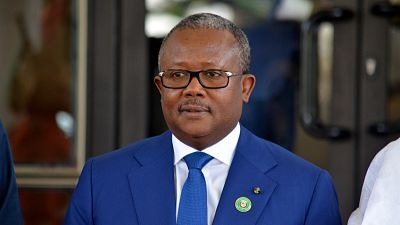get these nets
Veteran
*In French

02/25/25
Senegal Signs Historic Peace Deal with Casamance Separatists Senegal has reached a landmark peace agreement with the Movement of Democratic Forces of Casamance (MFDC), ending one of Africa’s longest-running conflicts.
The deal, brokered by Guinea-Bissau’s President Umaro Sissoco Embalo, was announced at a joint press briefing in Bissau alongside Senegalese Prime Minister Ousmane Sonko. The Casamance conflict, which began in 1982, has claimed thousands of lives and disrupted the region’s economy.
The agreement marks a crucial step towards lasting peace in Senegal’s southern region, which is separated from the north by Gambia. Prime Minister Sonko conveyed President Bassirou Diomaye Faye’s gratitude to Guinea-Bissau for mediating the negotiations, which had been ongoing for three days. "We had to close the work on the negotiations between the MFDC and the state of Senegal," he stated.

The MFDC has been fighting for Casamance’s independence for over four decades, but recent years have seen progress toward peace. In May 2023, at least 250 MFDC fighters surrendered their weapons in Mongone, signaling a shift towards reconciliation. This agreement brings hope for stability and economic recovery in Casamance, marking the end of one of Africa’s most enduring conflicts.
Senegal signs historic peace deal with Casamance separatists

02/25/25
Senegal Signs Historic Peace Deal with Casamance Separatists Senegal has reached a landmark peace agreement with the Movement of Democratic Forces of Casamance (MFDC), ending one of Africa’s longest-running conflicts.
The deal, brokered by Guinea-Bissau’s President Umaro Sissoco Embalo, was announced at a joint press briefing in Bissau alongside Senegalese Prime Minister Ousmane Sonko. The Casamance conflict, which began in 1982, has claimed thousands of lives and disrupted the region’s economy.
The agreement marks a crucial step towards lasting peace in Senegal’s southern region, which is separated from the north by Gambia. Prime Minister Sonko conveyed President Bassirou Diomaye Faye’s gratitude to Guinea-Bissau for mediating the negotiations, which had been ongoing for three days. "We had to close the work on the negotiations between the MFDC and the state of Senegal," he stated.

The MFDC has been fighting for Casamance’s independence for over four decades, but recent years have seen progress toward peace. In May 2023, at least 250 MFDC fighters surrendered their weapons in Mongone, signaling a shift towards reconciliation. This agreement brings hope for stability and economic recovery in Casamance, marking the end of one of Africa’s most enduring conflicts.
Last edited:

